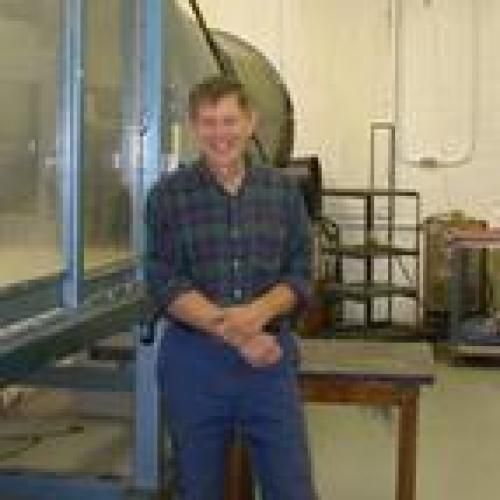
Gliding flight: drag and torque of a hawk and a falcon with straight and turned heads, and a lower value for the parasite drag coefficient.
Raptors - falcons, hawks and eagles in this study - such as peregrine falcons (Falco peregrinus) that attack distant prey from high-speed dives face a paradox. Anatomical and behavioral measurements show that raptors of many species must turn their heads approximately 40 degrees to one side to see the prey straight ahead with maximum visual acuity, yet turning the head would presumably slow their diving speed by increasing aerodynamic drag. This paper investigates the aerodynamic drag part of this paradox by measuring the drag and torque on wingless model bodies of a peregrine falcon and a red-tailed hawk (Buteo jamaicensis) with straight and turned heads in a wind tunnel at a speed of 11.7 m s(-)(1). With a turned head, drag increased more than 50 %, and torque developed that tended to yaw the model towards the direction in which the head pointed. Mathematical models for the drag required to prevent yawing showed that the total drag could plausibly more than double with head-turning. Thus, the presumption about increased drag in the paradox is correct. The relationships between drag, head angle and torque developed here are prerequisites to the explanation of how a raptor could avoid the paradox by holding its head straight and flying along a spiral path that keeps its line of sight for maximum acuity pointed sideways at the prey. Although the spiral path to the prey is longer than the straight path, the raptor's higher speed can theoretically compensate for the difference in distances; and wild peregrines do indeed approach prey by flying along curved paths that resemble spirals. In addition to providing data that explain the paradox, this paper reports the lowest drag coefficients yet measured for raptor bodies (0.11 for the peregrine and 0.12 for the red-tailed hawk) when the body models with straight heads were set to pitch and yaw angles for minimum drag. These values are markedly lower than value of the parasite drag coefficient (C(D,par)) of 0.18 previously used for calculating the gliding performance of a peregrine. The accuracy with which drag coefficients measured on wingless bird bodies in a wind tunnel represent the C(D,par) of a living bird is unknown. Another method for determining C(D,par) selects values that improve the fit between speeds predicted by mathematical models and those observed in living birds. This method yields lower values for C(D,par) (0.05-0.07) than wind tunnel measurements, and the present study suggests a value of 0.1 for raptors as a compromise.
Duke Scholars
Published In
DOI
EISSN
ISSN
Publication Date
Volume
Issue
Start / End Page
Related Subject Headings
- Wings, Animal
- Wind
- Vision, Ocular
- Torque
- Raptors
- Physiology
- Models, Biological
- Head
- Friction
- Flight, Animal
Citation

Published In
DOI
EISSN
ISSN
Publication Date
Volume
Issue
Start / End Page
Related Subject Headings
- Wings, Animal
- Wind
- Vision, Ocular
- Torque
- Raptors
- Physiology
- Models, Biological
- Head
- Friction
- Flight, Animal

